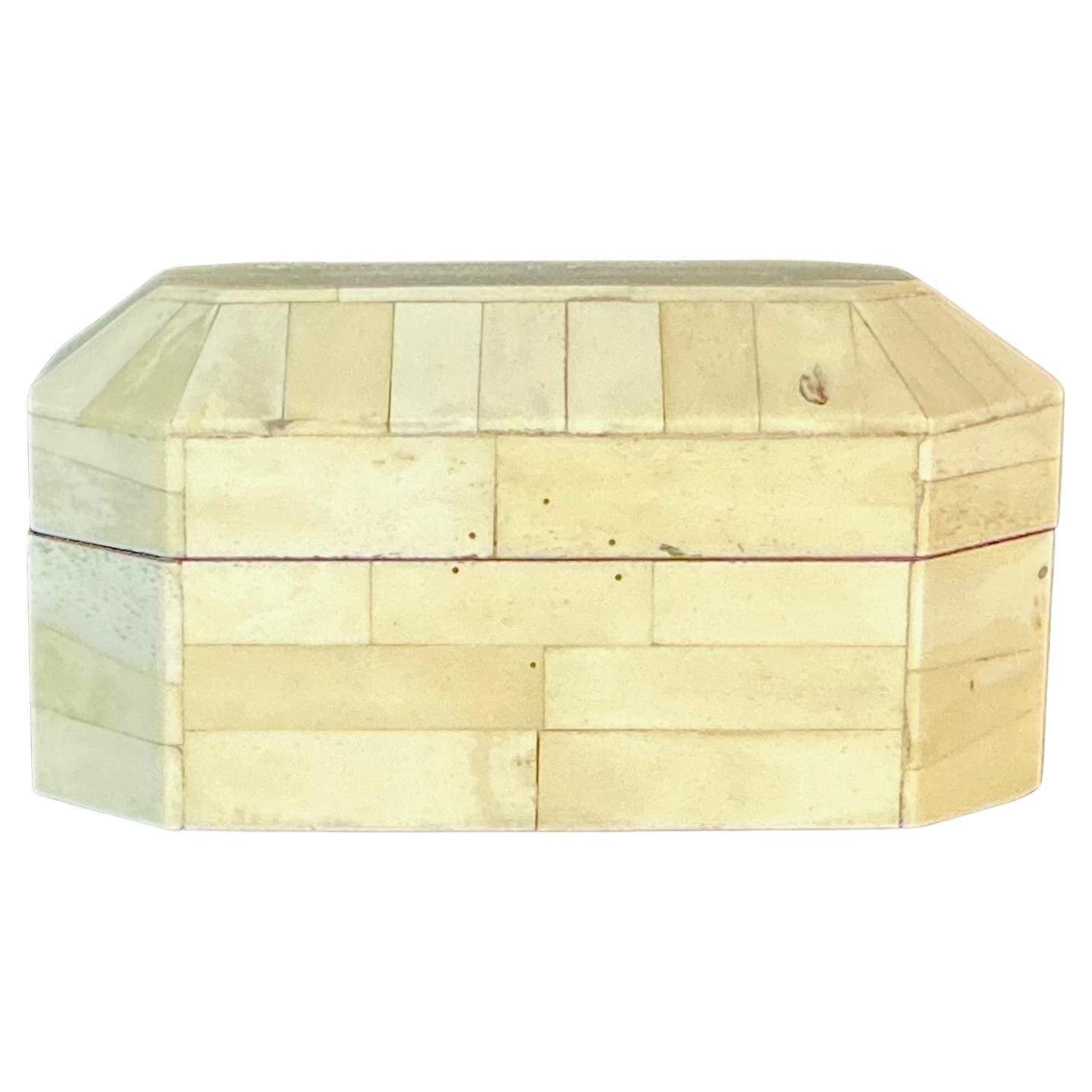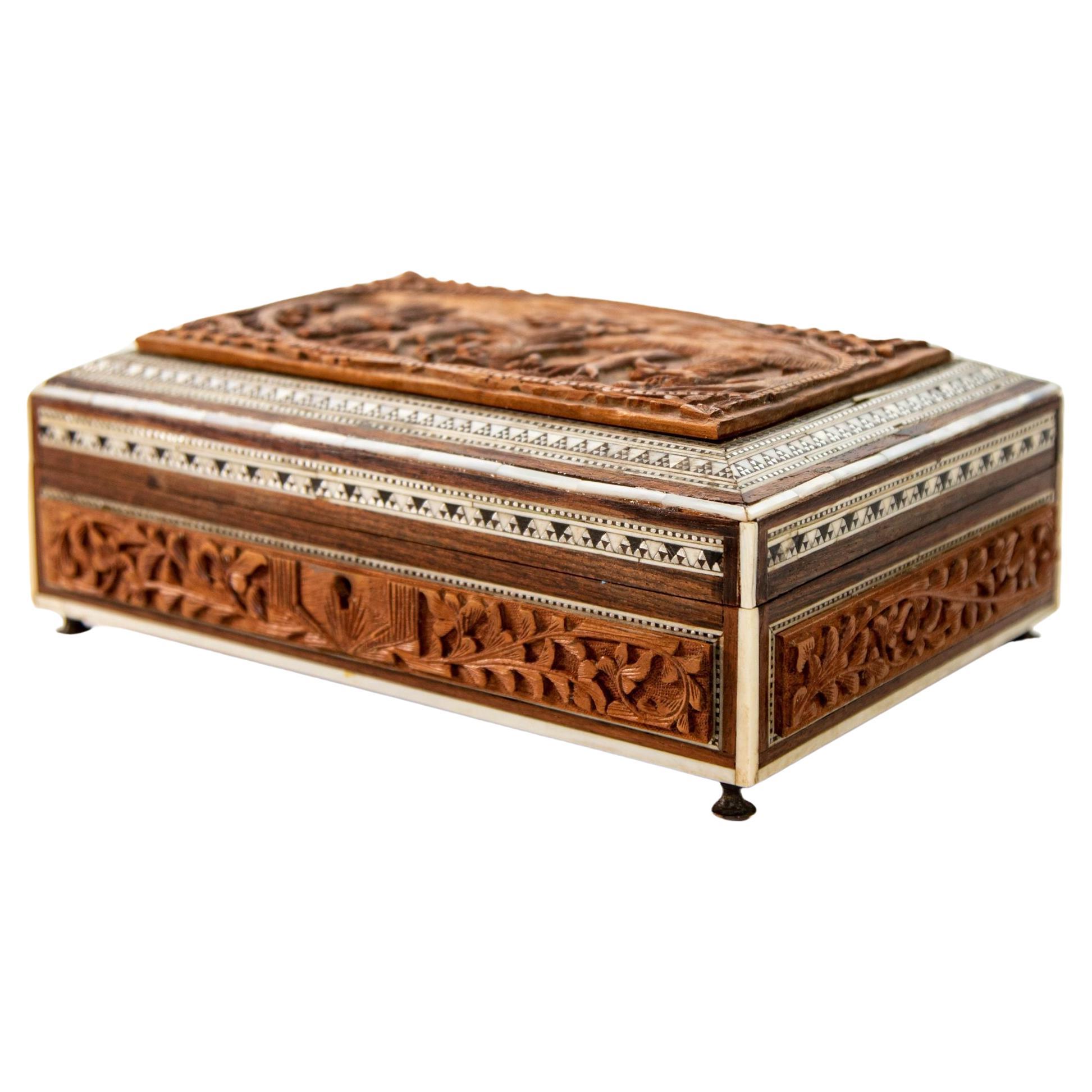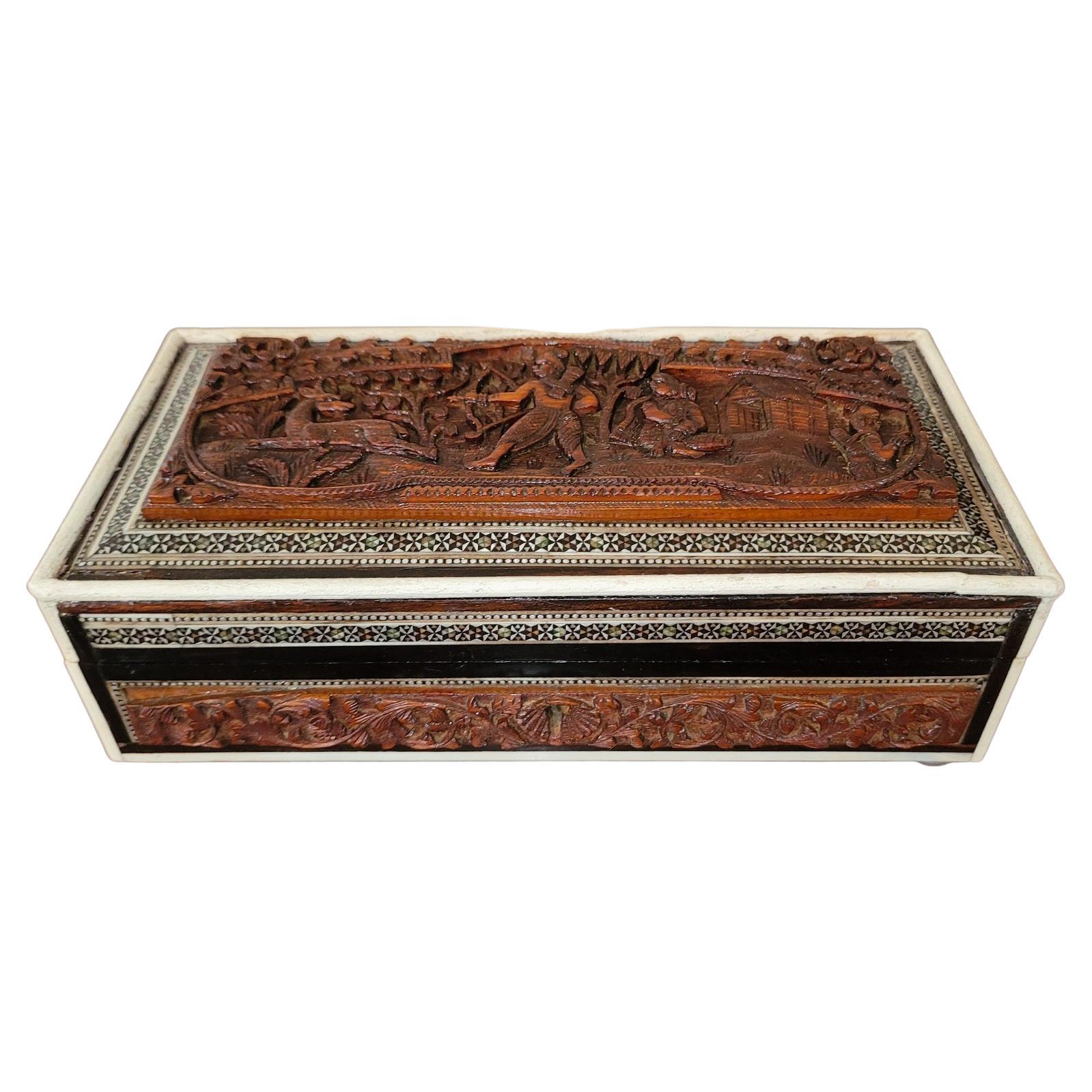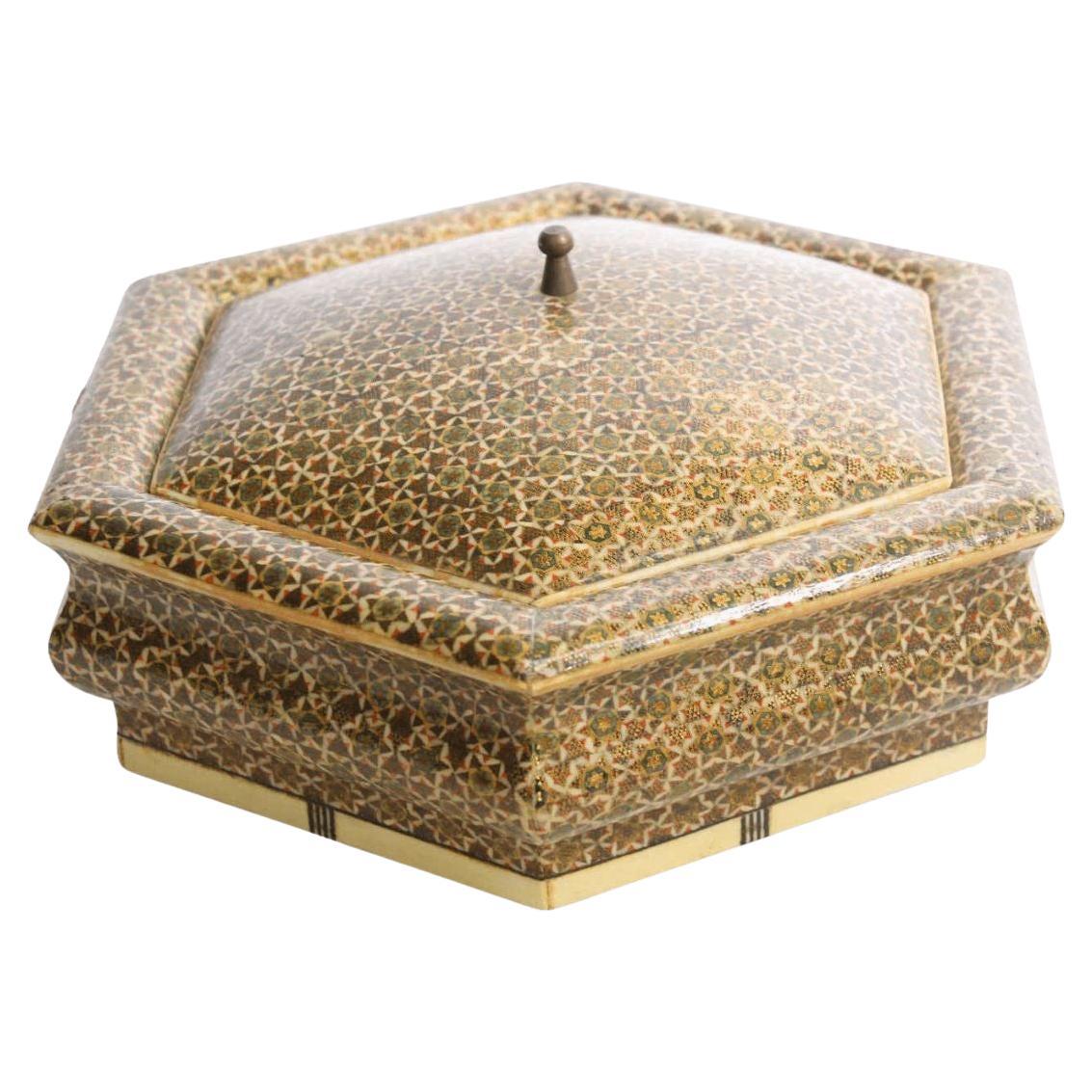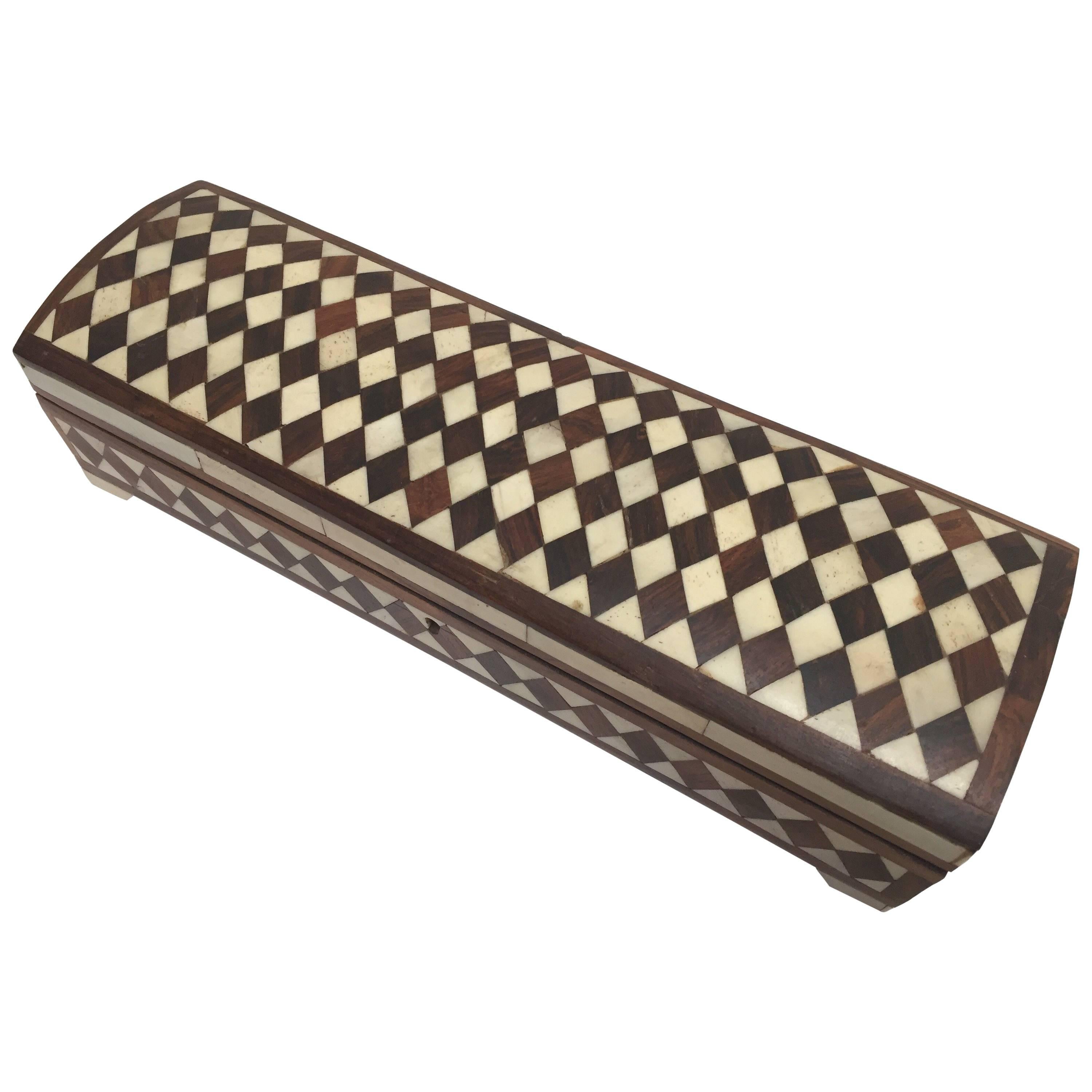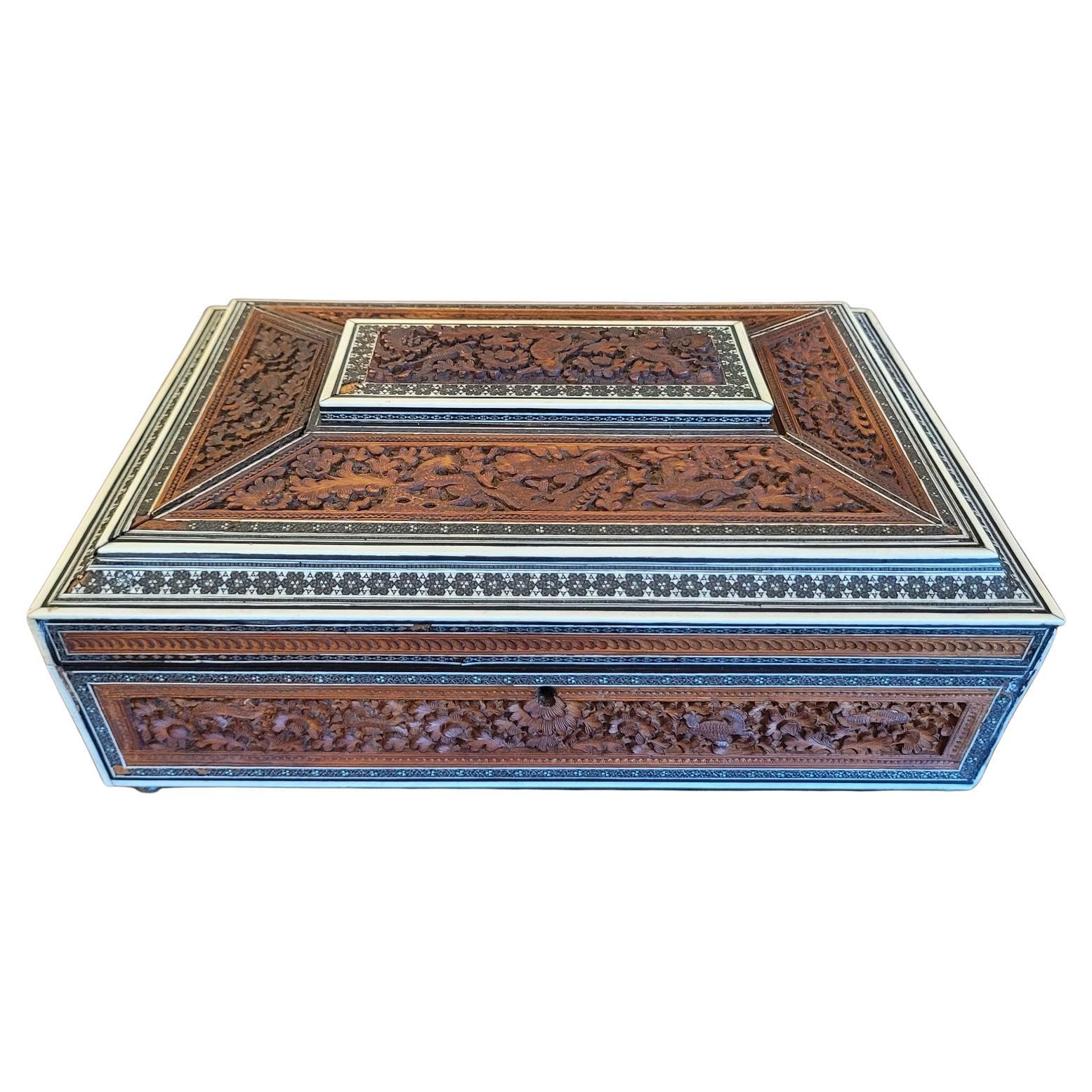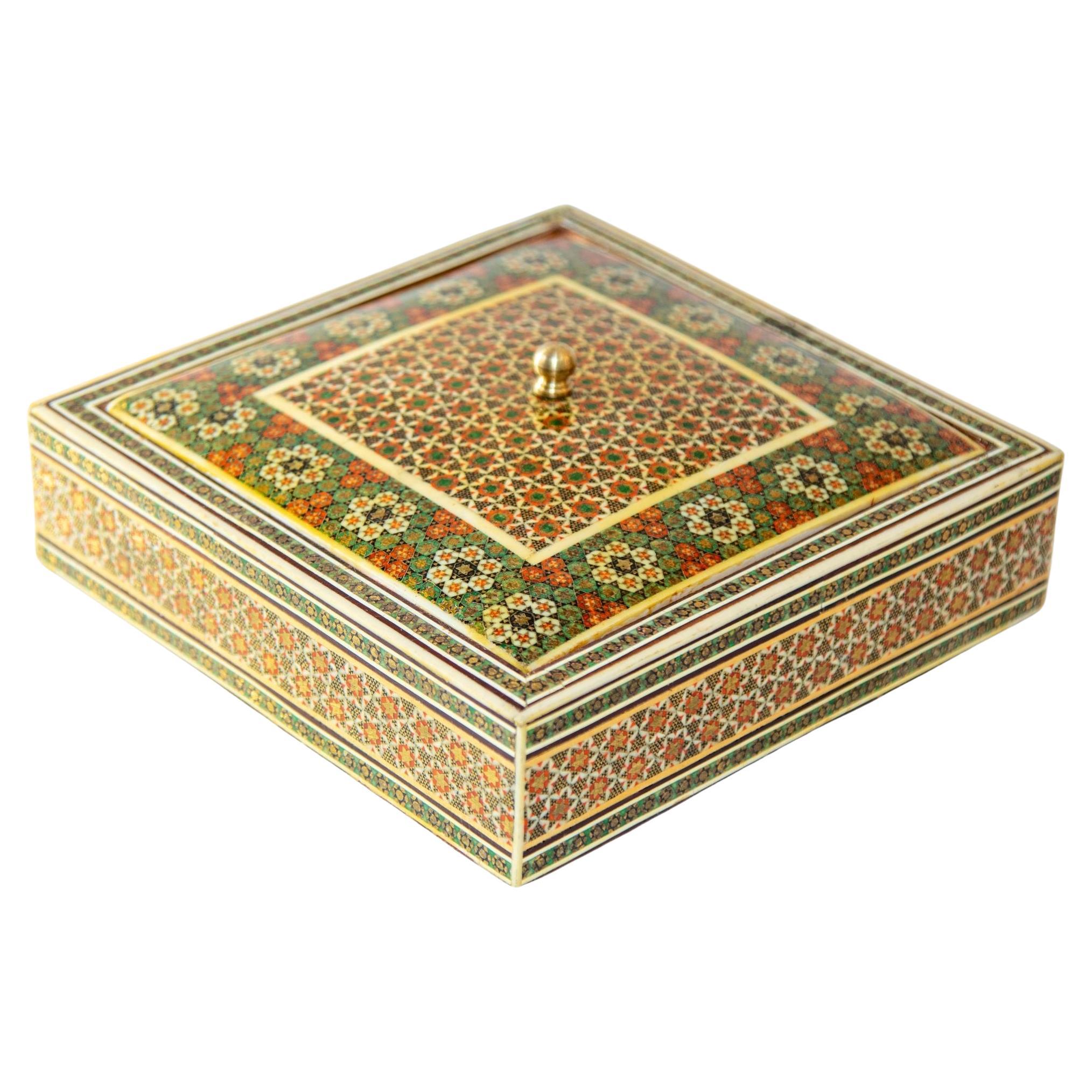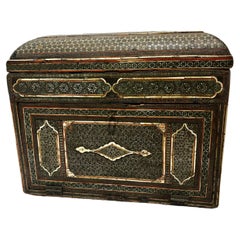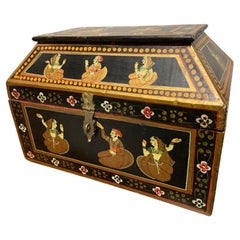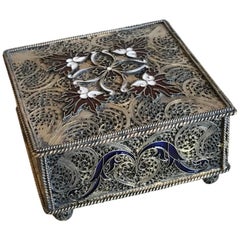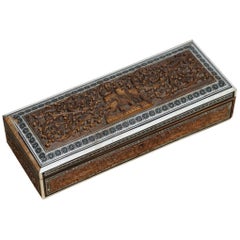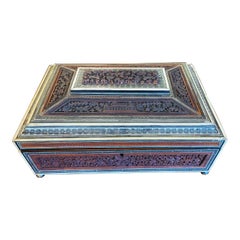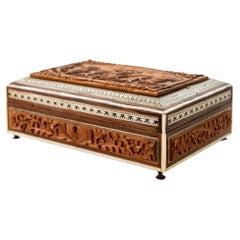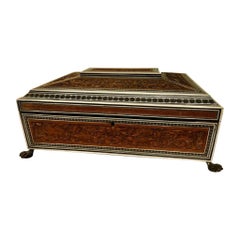
Anglo-Indian Carved Sandalwood and Bone Sadeli Inlaid Box
View Similar Items
Want more images or videos?
Request additional images or videos from the seller
1 of 21
Anglo-Indian Carved Sandalwood and Bone Sadeli Inlaid Box
Price:$1,550
$1,762.50List Price
About the Item
- Dimensions:Height: 5.5 in (13.97 cm)Width: 12.75 in (32.39 cm)Depth: 9.25 in (23.5 cm)
- Style:Anglo-Indian (Of the Period)
- Materials and Techniques:
- Place of Origin:
- Period:
- Date of Manufacture:1850
- Condition:Wear consistent with age and use. Overall very good, some old restorations typical with a box of this age.
- Seller Location:Stamford, CT
- Reference Number:1stDibs: LU803017741651
About the Seller
5.0
Platinum Seller
Premium sellers with a 4.7+ rating and 24-hour response times
Established in 1990
1stDibs seller since 2004
472 sales on 1stDibs
Authenticity Guarantee
In the unlikely event there’s an issue with an item’s authenticity, contact us within 1 year for a full refund. DetailsMoney-Back Guarantee
If your item is not as described, is damaged in transit, or does not arrive, contact us within 7 days for a full refund. Details24-Hour Cancellation
You have a 24-hour grace period in which to reconsider your purchase, with no questions asked.Vetted Professional Sellers
Our world-class sellers must adhere to strict standards for service and quality, maintaining the integrity of our listings.Price-Match Guarantee
If you find that a seller listed the same item for a lower price elsewhere, we’ll match it.Trusted Global Delivery
Our best-in-class carrier network provides specialized shipping options worldwide, including custom delivery.More From This Seller
View All19th Century Anglo-Indian Sadeli Inlaid Work Box Traveling Writing Desk
Located in Stamford, CT
A stunning camel bone, ebony and metal inlaid sadeli work box with portable writing desk, Bombay, circa 1850.
The sandalwood body of faceted rec...
Category
Antique Mid-19th Century Indian Anglo-Indian Decorative Boxes
Materials
Metal
19th Century Anglo Indian Inlaid Mosaic Box With Drop Front and Drawers
Located in Stamford, CT
19th Century Anglo Indian fall front box with six drawers with metal pulls. The exterior and interior inlaid throughout with bone and various woods. Intricate geometric designs cover...
Category
Antique Mid-19th Century Decorative Boxes
Materials
Bone, Fruitwood, Holly
Anglo Indian Decorative Box with Painted Figures of Dancers
Located in Stamford, CT
Very decorative hand painted in the Anglo-Indian style. Painted back and gold with each framed panel filled with female dancers and male flower bearing suiters. A colorful and fun, a...
Category
Mid-20th Century Indian Anglo-Indian Decorative Boxes
Materials
Wood
Portuguese Silver Filigree and Enamel Box with Gold Wash
Located in Stamford, CT
A silver trinket box with exquisite filigree work throughout, including the bottom and the feet. With white and red enamel decoration on the top and deep blue on the side. The delica...
Category
Early 20th Century Portuguese Art Nouveau Decorative Boxes
Materials
Silver
Anthony Redmile Box with Nickle Plated Mounts and Inset Opal
By Anthony Redmile London
Located in Stamford, CT
Beautifully made vintage steer horn box by Anthony Redmile. With polished horn body and hand hammered nickle plated brass mounts. The top with an i...
Category
Mid-20th Century English Mid-Century Modern Decorative Boxes
Materials
Opal, Nickel
Whaler Made Bone and Ebonized Wood Round Lidded Box, circa 1850
Located in Stamford, CT
Whaler made antique bone and ebonized wood round box, circa 1850. With pierced bone medallion and delicately carved bone spiral decorative supports on the...
Category
Antique Mid-19th Century American Folk Art Decorative Boxes
Materials
Bone, Wood
You May Also Like
19th Century Anglo Indian Vizagapatam Carved Sandalwood Box Micro Mosaic Inlays
Located in West Sussex, Pulborough
We are delighted to offer for sale this lovely 19th century Anglo-Indian Vizagapatam carved sandalwood and inlaid box
Mid-19th century Anglo-Indian Vizagapatam carved sandalwood box...
Category
Antique 19th Century Indian Anglo-Indian Decorative Boxes
Materials
Wood
$287 Sale Price
30% Off
Anglo-Indian Inlaid Bone Box
Located in Bradenton, FL
Mid-20th Century Anglo-Indian Inlaid Bone Jewelry or Trinket Box. Box features hand-cut bone tiles arranged in a paneled pattern, giving the piece a subtle textural appeal and natura...
Category
Mid-20th Century Indian Anglo-Indian Jewelry Boxes
Materials
Bone, Wood
19C Anglo Indian Highly Carved Teak Sadeli Mosaic Inlaid Sewing Box
Located in Dallas, TX
PRESENTING A LOVELY 19C Anglo Indian Highly Carved Sadeli Mosaic Inlaid Sewing Box.
Made in Bombay, India, circa 1880.
The box is made of sandalwood with highly carved raised teak wood panels on all sides, depicting temple scenes, animals and foliage.
The box is in a sarcophagus form.
It is edged in bone (and we can tell it is bone and not ivory, from the color and evidence of capillaries, which are not found in ivory), and banded with Bombay Sadeli mosaic and ebony veneer.
The lid opens to reveal a removable tray with various open compartments and lidded compartments. 5 lidded compartments, 1 unlidded compartment and 8 holders for thimbles, etc
The tray lifts to reveal a blue velvet (original) lined section, for storing jewelry etc, with sections for collars etc.
The inside of the lid has a removable mirror (the mirror is missing on this one but can easily be replaced). Behind the mirror is the original green velvet lining.
It has its original brass carry handles on the sides and sits on 4 silvered button feet (of recent origin).
Some repairs to the exterior and condition issues (priced accordingly), but still a LOVELY COLLECTIBLE box!
These boxes were made by superb Indian craftsmen, specifically for sale to the ruling British elite. These types of boxes, carved padouk and sandalwood, (whilst beautiful and superbly crafted) were of a lesser quality, than the more profusely and intricately mosaic inlay, tortoiseshell and ivory boxes, made for the British ‘Upper Classes’ in the areas of Bombay and Vizagapatam. These type of boxes were much more affordable back in 1880 (and indeed today) and would probably have been bought by mid-level diplomats, civil servants or visitors.
Sewing boxes (in general), were in EVERY Victorian home in Britain in the 19th century and like other boxes etc were ‘status symbols’ of your place in society! The more ornate the box, the more ‘Upper Class’ you were!
SADELI MOSAIC: “Anglo Indian boxes were made in India for the English residents from the early part of the 18th century. They were brought back or sent back to England usually by the people who had commissioned them. From the beginning of the nineteenth century they were imported more commercially, although not in any significant numbers until the middle decades. They were very highly valued, especially the early ones, to the extent that the designs were copied on late 19th and early 20th century tins.
The ancient art of Sadeli Mosaic is said to have been introduced from Shiraz in Persia via Sind to Bombay, a long time before the Anglo Indian boxes were made. It was a technique, which required a high degree of skill and patience. It was executed very lavishly, in that the frequent cuts wasted a great amount of the precious materials used. The workmanship was however more than commensurable to the value of the materials.
Ivory, silver, pewter (or other metals), wood and Horn were cut into faceted rods which were bound together to form geometric patterns. When the glue has set, the rods were sliced in transverse sections. This gave the maker a number of angled circular pieces in the original pattern. Several variations of patterns could be achieved by combining the materials in different ways. The ivory was sometimes dyed green to give an extra color.
The mosaic pieces in a combination of patterns, often separated by ivory, ebony, Horn or silver stringing were used to veneer sandalwood boxes. In the early boxes, which date from the turn of the 18th to the 19th century, there are large panels of mosaic covering tops and sides of boxes. It took incredible skill to cover such large areas without any shakes or wavering of the pattern. The corners and joins on these boxes are impeccably matched.
The makers (reputed to be Persian) of Sadeli mosaic made in the first two decades of the 19th century displayed a total understanding of the qualities of the different materials they used. They combined substances, which can expand and contract according to atmospheric conditions with others, which are hard and unyielding. The result was a sharp definition of the lines and patterns, which made up the whole design.
On the early boxes the designs look deceptively simple. The fact is, they emerged from a culture, which had mastered geometry and understood how to generate a pattern from a set number of points. The patterns are so harmoniously combined that their incredible complexity is not immediately apparent.
The earliest Sadeli boxes...
Category
Antique Late 19th Century Indian Anglo-Indian Decorative Boxes
Materials
Bone, Sandalwood, Teak
Antique Anglo-Indian Vizagapatam Jewelry Inlaid Sadeli Footed Box
Located in North Hollywood, CA
Antique 19th century Anglo-Indian jewelry, trinket footed box, inlay with ebony, mosaic marquetry Sadeli work and a carved Hindu scene on top.
The box case is made from sandalwood wi...
Category
Early 20th Century Indian Anglo-Indian Decorative Boxes
Materials
Bone, Mother-of-Pearl, Wood
Anglo Indian Sandalwood and Horn Writing Box
Located in Queens, NY
Anglo Indian (19th Century) antler veneered sandalwood writing box of rectangular form with 2 glass inkwells above a drawer (Vizigapatam).
Category
Antique 19th Century Anglo-Indian Inkwells
Materials
Glass, Wood
19C Anglo Indian Carved Teak Wood and Sadeli Mosaic Box
Located in Dallas, TX
PRESENTING A LOVELY 19th century Anglo-Indian Carved Teak Wood and Sadeli Mosaic Box, featuring a carving of a Hunt Scene.
Made circa 1870 in Bombay, India during the Rule of the Br...
Category
Antique Late 19th Century Indian Anglo-Indian Jewelry Boxes
Materials
Silver, Pewter
Recently Viewed
View AllMore Ways To Browse
Bombay Box
Carved Bone Bird
India Sandalwood
Carved Bone Elephants
Antique Sandalwood Box
Carved Sandalwood
Sadeli Box
Ebony Elephant
Anglo Indian Sandalwood Box
India Chess
Antique Indian Silver Elephant
Ebony Carved Elephant
Bird Micro Mosaic
Bone Chess
Mother Of Pearl Chess
Mother Of Pearl Elephant
Bone Inlay Elephant
Silver Indian Card Case

